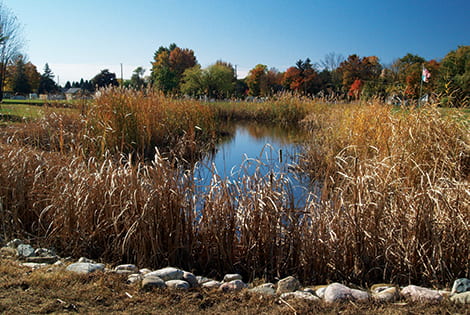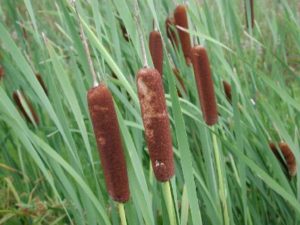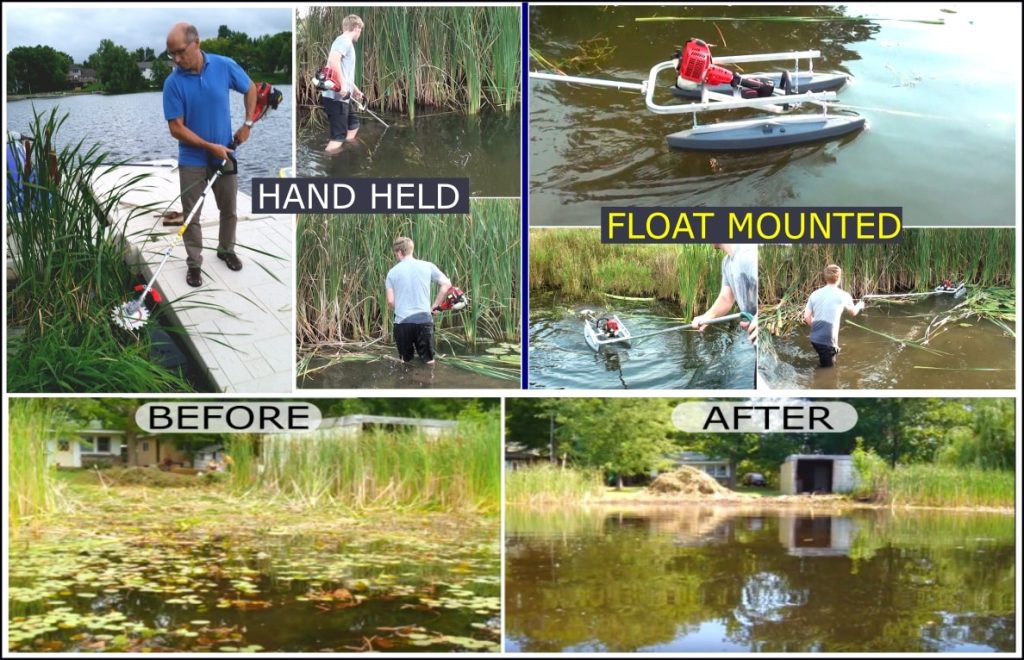Having a pond can be a beautiful addition to your property, but dealing with invasive plants like cat tails can be a real headache. Cat tails, also known as bulrushes or reeds, are common aquatic plants that can quickly take over a pond if left unchecked. In this guide, we will explore effective methods to kill cat tails in a pond and regain control over your aquatic ecosystem.
Understanding Cat Tails
Cat tails are perennial plants that thrive in wet environments such as ponds, lakes, and marshes. They have long, slender leaves and cylindrical flower spikes that give them their distinctive appearance. While cat tails can provide habitat for wildlife, their rapid growth can choke out other plants and disrupt the balance of your pond ecosystem.

Credit: www.thepondguy.com
Methods to Kill Cat Tails
There are several methods you can use to effectively kill cat tails in your pond. It’s important to choose a method that suits the size of your pond and the extent of the cat tail infestation. Here are some effective ways to tackle cat tails:
1. Mechanical Removal
One of the most straightforward methods to control cat tails is through mechanical removal. This involves physically cutting or pulling out the plants from the pond. While this method can be labor-intensive, it can be effective for small infestations or for preventing regrowth after using other methods.
2. Herbicides
Herbicides can be an effective way to kill cat tails in a pond. There are selective herbicides specifically designed to target aquatic plants like cat tails while minimizing harm to other plants and wildlife. It’s important to carefully follow the instructions on the herbicide label and take precautions to protect the pond environment.
3. Biological Control
Biological control methods involve introducing natural predators or competitors to help control cat tail growth. For example, introducing grass carp, a fish species that feeds on aquatic plants, can help keep cat tail populations in check. However, it’s essential to research the potential impacts of introducing new species to your pond ecosystem.
4. Physical Barriers
Installing physical barriers can help prevent cat tails from spreading in your pond. Barriers like pond liners or geotextiles can be used to block sunlight and nutrients from reaching the plants, effectively stifling their growth. This method is best suited for containing cat tails in specific areas of the pond.

Credit: aquaplant.tamu.edu
Preventing Cat Tail Regrowth
Once you have successfully killed the cat tails in your pond, it’s essential to take steps to prevent regrowth and maintain a healthy aquatic environment. Here are some tips to prevent cat tails from coming back:
- Regularly monitor your pond for signs of cat tail regrowth.
- Remove any new cat tail shoots promptly before they have a chance to spread.
- Maintain proper water quality and nutrient levels to discourage cat tail growth.
- Consider planting native aquatic plants that can outcompete cat tails for resources.
- Implement a regular maintenance schedule to keep your pond healthy and free of invasive plants.
Conclusion
Dealing with cat tails in a pond can be a challenging task, but with the right methods and techniques, you can effectively control and eliminate these invasive plants. Whether you choose mechanical removal, herbicides, biological control, or physical barriers, it’s essential to take a proactive approach to maintain a healthy pond ecosystem. By following the tips outlined in this guide, you can successfully kill cat tails in your pond and enjoy a thriving aquatic environment for years to come.





